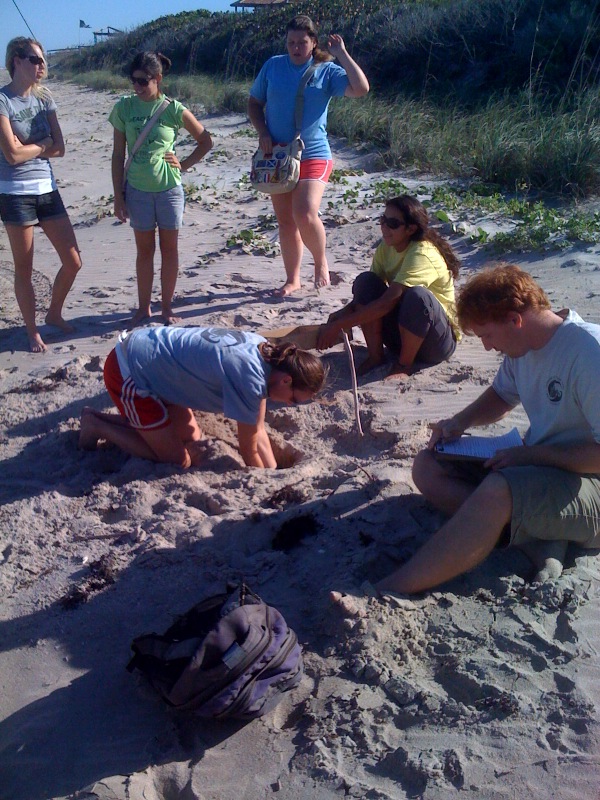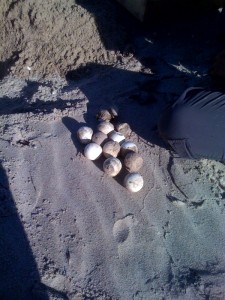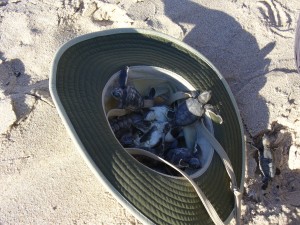 The high density of sea turtles at the Archie Carr National Wildlife Refuge provides a wonderful opportunity for research, and a team from the University of Central Florida takes full advantage of it. They were kind enough to allow me to tag along.
The high density of sea turtles at the Archie Carr National Wildlife Refuge provides a wonderful opportunity for research, and a team from the University of Central Florida takes full advantage of it. They were kind enough to allow me to tag along.
Every night during nesting season, UCF researchers patrol the beach waiting for turtles to come ashore. While passively observing so as not to bother the turtles, they record the location of the nests and make sure that terrestrial predators (such as raccoons) leave them alone. The number of nests for each species (and whenever possible, the number of nests per individual turtle) are recorded. When the eggs hatch, the number of hatchlings is recorded. The morning after a hatching event, I followed the UCF team to a green sea turtle nest.
Sadly (though not surprisingly), several of the approximately 100 ping-pong-ball-sized eggs did not hatch. The number of unhatched eggs is carefully recorded, since changes in this pattern over time can indicate stress in the adult population. In addition to the unhatched eggs, we also find some green sea turtle hatchlings that were too weak to dig their way out of the nest.
The first phase of a young sea turtle’s life involves a great deal of swimming, often nonstop swimming until they reach the offshore developmental habitat where they will spend the first few years of their life. In other words, if a hatchling lacks the strength to dig out of the nest, it’s not a good sign. Still, the UCF scientists rounded up the hatchlings for later release.
Sea turtles have a remarkable natal homing ability- they return to the beach where they were born to lay eggs. If all goes well, the hatchlings that we released will come back to the beaches of Archie Carr in 30 years or so.



